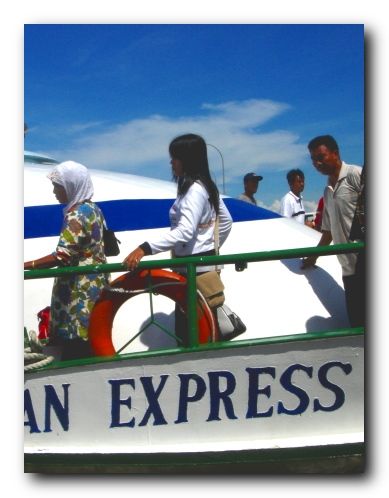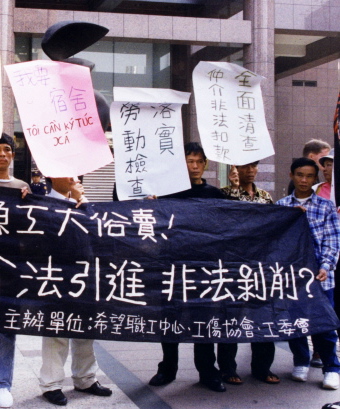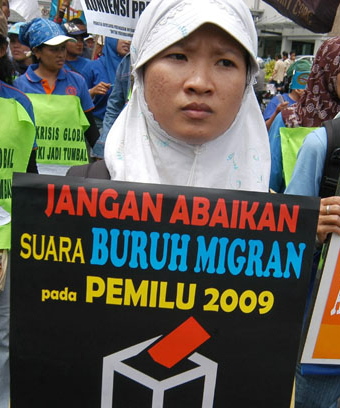Oil palm projects are causing hunger in Merauke, both literal and symbolic
Sophie Chao
In the West Papuan district of Merauke, vast swaths of forest and savannah have been razed to make way for monocrop oil palm plantations and other agroindustrial projects over the last decade. These land conversions have resulted in an array of environmental problems, including widespread biodiversity loss, deforestation, critical soil erosion, and the pollution of soil, water and air. Most directly affected by these changes are the Indigenous Marind communities upon whose customary territories monocrop expansion is taking place, among whom I have been doing ethnographic fieldwork since 2013.
Although national policy has encouraged the expansion of oil palm plantations throughout the country over the past 20 years as a valuable export crop, it is only in the last decade or so that oil palm monocrops have been established in West Papua. With arable land growing scarce in Sumatra, Java and Kalimantan, the oil palm frontier is now rapidly moving east, driven by national palm oil production targets, the perceived availability of unused lands in the region, and the need for further socioeconomic ‘development’ in West Papua.
Many Marind in rural Merauke report that oil palm projects are being designed and implemented without their free, prior and informed consent or ongoing participation. This has often resulted in conflict between communities and corporations and conflict within communities over matters of land rights, employment opportunities and compensation payments. Most significantly, the conversion of forest landscapes to monocrop plantations and the substitution of forest-based food systems with processed commodities have provoked growing malnutrition and food insecurity among Marind communities, who have traditionally relied on the forest for their subsistence. Malnutrition, or the lack of nutritionally rich and balanced foods, and food insecurity, or peoples’ limited access to sufficient quantities of nutritious food, have together created a condition of perpetual hunger – one that, as Marind frequently told me, cannot easily be satiated by processed foods.
A new kind of hunger
Certainly, experiences of hunger were far from unknown to Marind prior to the oil palm incursion. Different periods of the year were associated with the availability of different foods depending on seasonality, animal migration patterns and climactic conditions such as drought or monsoon. These periods, however, were never permanent but rather episodic, and the decline in one foodstuff was compensated by the abundance of another. In line with customary law, a range of different rituals and ceremonies helped ensure that food supplies were replenished over time and that the fertility of the soils and waters of the forest was maintained.
 Deforestation and monocrop oil palm expansion have provoked a spate of malnutrition, particularly among Marind infants and children / Sophie Chao
Deforestation and monocrop oil palm expansion have provoked a spate of malnutrition, particularly among Marind infants and children / Sophie Chao
In contrast, the obliteration of vast areas of forest in Merauke today has resulted in a generalised scarcity of forest foods – sago, cassowary, wild pigs and fruit, among others. Animals and plants have fled or been decimated because of land clearing, forest burning and the substitution of biodiverse forests with industrial monocrop plantations. Just as non-human organisms find little to subsist on within the homogeneous environment of oil palm plantations, so too Marind say they are afflicted by a growing and unprecedented sense of hunger. As Gerfacius, a Marind elder, put it, ‘In the plantation, there is no freedom, no kin and no real food. In the plantation, there is just hunger and loneliness.’
But for Marind, food is also about much more than just nutritional intake. The particular values attributed to forest foods arise from the fact that the plants and animals from which these foods are derived are considered by Marind to be sentient kin with whom they share common ancestral dema, or spirits. Plants and animals share stories, myths and encounters with humans in the distant and near past, that together compose a vast body of traditional law and custom, passed on from generation to generation. Each species also shares a connection to a particular Marind clan, whose names commemorate these relations by way of an animal or plant prefix. For instance, members of the Balagaize clan are the ‘children of the crocodile’ (balagai meaning crocodile and ze meaning child in Marind).
Similarly, members of the Mahuze clan are the children of the dog, or mahu in Marind. Relations around feeding and being fed between Marind and their non-human forest kin are anchored in reciprocal respect and care. Eating forest foods means acknowledging that one is also food for others. In these mutual chains of consumption, humans, animals and plants participate together in a collective chain of nurture.
In contrast, imported commodities that are replacing native foods are described by many Marind as tasteless and unsatiating because, as Rosalina, a Marind mother of three put it, ‘they do not taste of the forest’. These foods, that include rice, instant noodles and biscuits, come from unknown places and are grown and processed by unknown people. These foods are not derived from plants and animals with whom Marind share intergenerational kinships and pasts. They are not procured or prepared by relatives or friends. And they lack the moral, cultural and emotional dimensions that imbue forest foods with meaning, flavour and nourishment. More than this, processed foods are said by Marind to exacerbate the hunger of those who consume them. Children, for instance, clamour for more food within hours of eating instant noodles. Women described snacking on processed biscuits throughout the day but always craving more. Young men also talked of having become addicted to rice, which they would eat in copious amounts without feeling full.
Eating the future
The disappearance of forest foods has had physically adverse effects on people. For instance, Selly, a young woman with whom I frequently walked the forest in search of medicinal herbs, spoke of her breasts becoming dry and her skin sallow from the absence of sago. Village men described how the scarcity of forest game had depleted their bodies of blood, fat and muscle. Many community members noted that their children’s skin had become thin and grey rather than glossy and taut. Experiencing hunger and witnessing the hunger of others is also a deeply emotional experience. People express feelings of sadness and anxiety as a result of food scarcity. They also describe a pervasive sense of loneliness caused by the severance of their connections to the forest and its past and present lifeforms. Many community members lamented the decline in collective hunting and foraging activities that had once sustained the mutual relationships of humans and non-humans in the forest.
 While some Marind consider processed foods, like instant noodles, to be unsatiating and tasteless, other Marind associate these foods with a desired modern way of life / Sophie Chao
While some Marind consider processed foods, like instant noodles, to be unsatiating and tasteless, other Marind associate these foods with a desired modern way of life / Sophie Chao
Yet at the same time, many Marind are attracted to processed foods because they associate them with a modern way of life and see them as a welcome change from traditional diets. For instance, rural Marind villagers who have spent prolonged periods of time working or studying in Merauke City or Jayapura have adapted to urban diets and now prefer city foods over forest foods. Tensions also arise among Marind themselves over matters of food. This is particularly evident between young and old generations of Marind, who either embrace processed foods as a way of participating in modernity or reject them because they threaten to supersede traditional foods and the forest ecologies from which these foods are derived.
In many ways, then, tensions over what to eat or not to eat replicate on a small but daily scale a broader set of frictions provoked by oil palm expansion in Merauke. These include, for instance, whether to endorse or reject oil palm projects, whether to seek employment in the city or retain forest-based livelihoods, and whether to accept or resist cultural changes associated with the spread of capitalism. Different kinds of hunger, both literal and symbolic, are at play among Marind today. Some Marind hunger for a return to forest-based livelihoods that are anchored in custom and tradition. Others, meanwhile, hunger for new ways of living achieved through alternative forms of eating.
Voices for the hungry
What can Indigenous Marind’s experiences of hunger teach us about nutritional health, diet and food security in contemporary Merauke? First, Marind conceptualise the form and effects of food itself in deeply culturally embedded ways. In other words, local norms, values and relations imbue different foods with equally diverse meanings and values, that often go beyond solely quantitative or calorie measurements. From a Marind perspective, then, food is not just about what is eaten but also where food comes from, how it is produced, and by whom.
Second, Marind experiences point to the potentially adverse impacts on local food security of large-scale agribusiness projects that are themselves designed and implemented in the name of national food sovereignty. As many Marind pointed out to me, there is a need for inclusive, multi-stakeholder negotiated action between government, corporate and indigenous representatives to ensure that traditional food systems can survive oil palm.
Meeting these local needs will not be easy. After all, Marind themselves are divided over what counts as a meaningful and nourishing diet. But including indigenous voices in dialogue and policy making pertaining to food production and distribution remains critical to ensuring that their right to food, as both a nutritional and cultural resource, is adequately respected.
Sophie Chao (sophie.chao@sydney.edu.au) is a postdoctoral research associate at the University of Sydney and an honorary postdoctoral fellow at Macquarie University. She previously worked for the human rights organisation Forest Peoples Programme and has published several books on indigenous peoples and the palm oil sector in Southeast Asia. See her website for more information.














